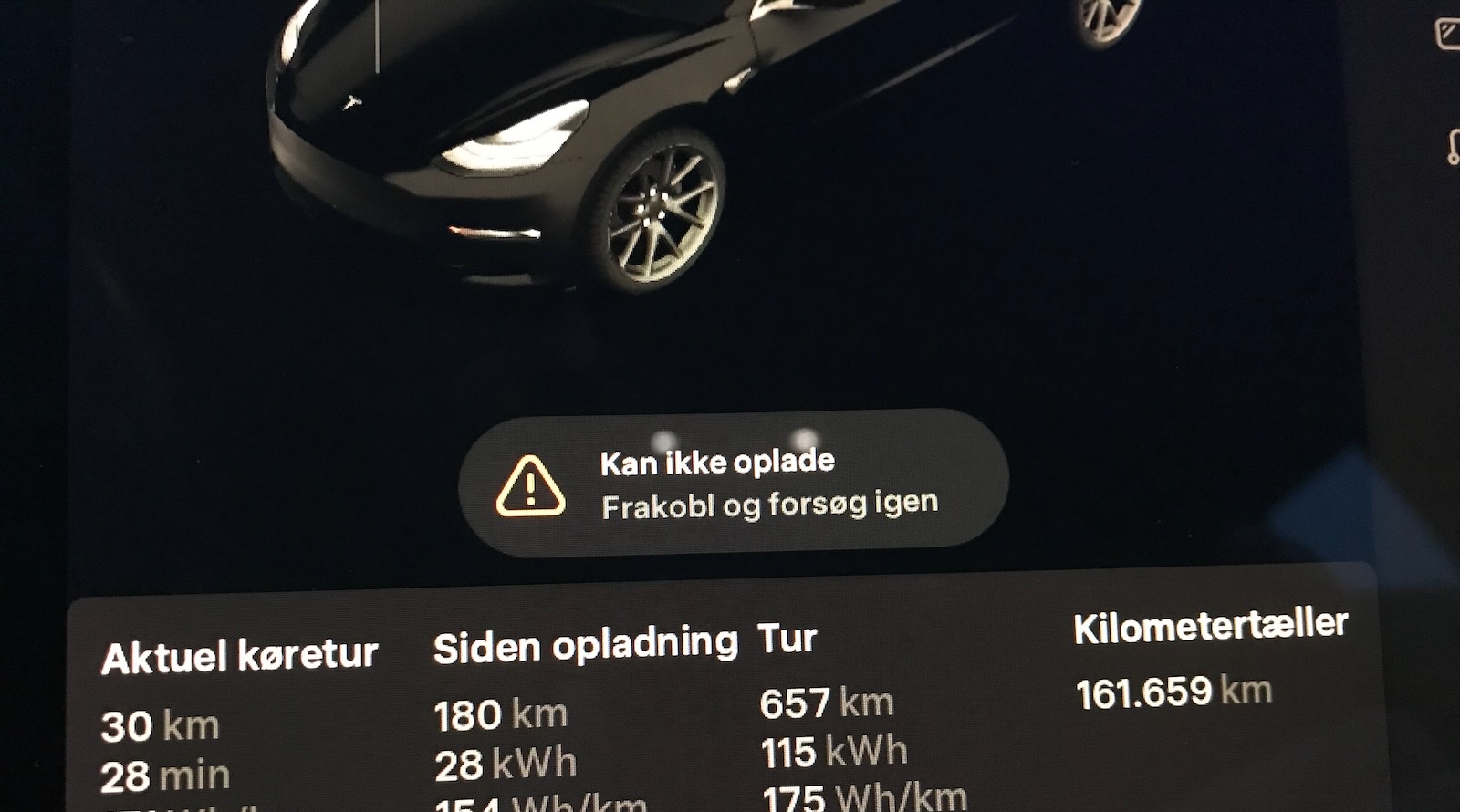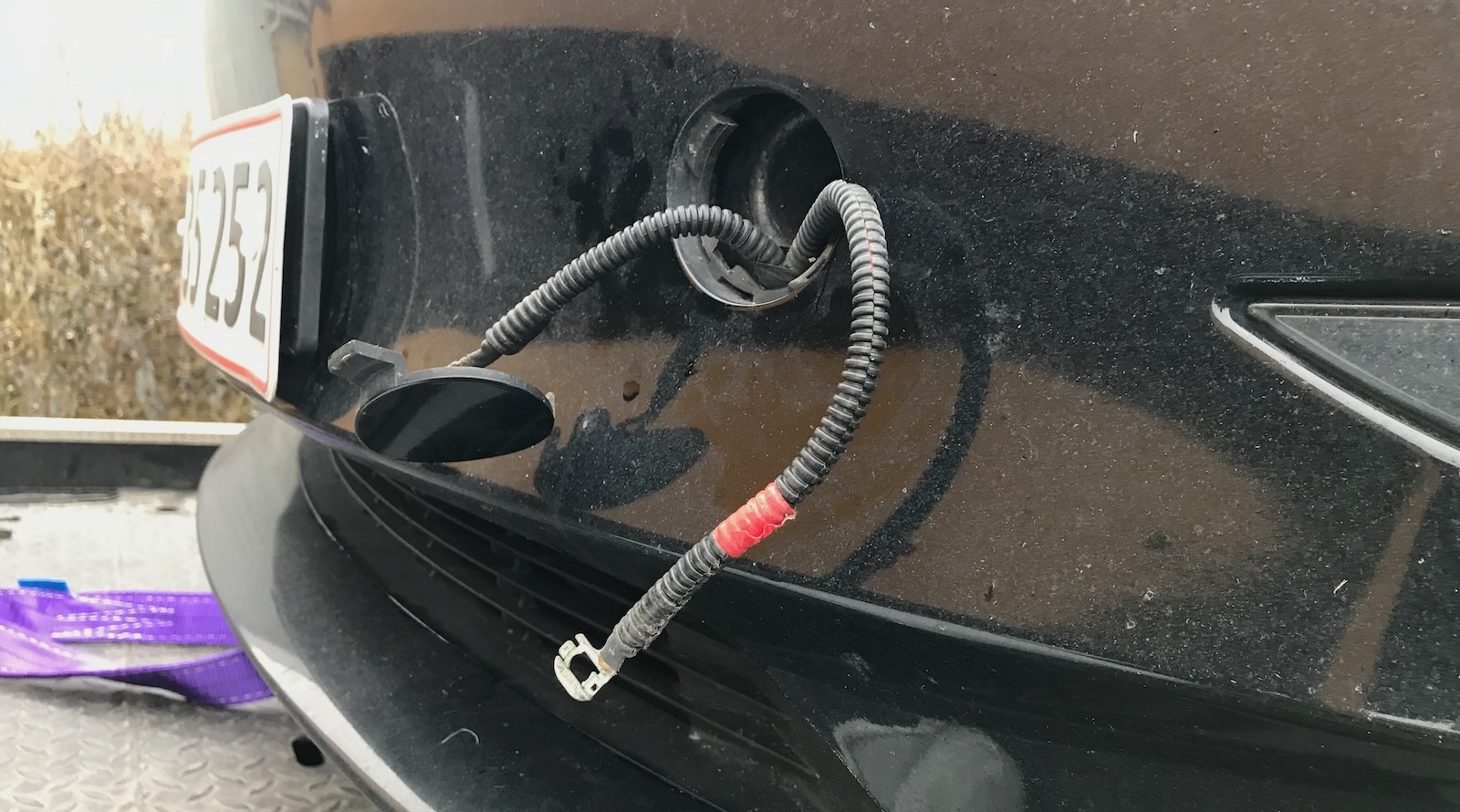Sign up for daily news updates from CleanTechnica on email. Or follow us on Google News!
Why is it that, often when you reach a milestone and you are really happy about it, things go bad afterwards? I recently wrote a review of my Tesla Model 3 reaching 100,000 miles, with detailed TCO (Total Cost of Ownership), and I stick by the conclusion that this car is amazing. However, what I thought was a good old worn out 12-volt battery issue (resulting in my car having to be towed to the service center and stay there for several days) was actually something totally different.
Since I so recently wrote about the car, I owe you this little story of what happened next. I never heard of this fault before, so it is in everyone’s interest to know it can happen — to any EV really. I can’t blame Tesla for being a bit slow on the service side when it obviously prioritizes scheduled service. I get that. Communication via the app was effective, but a week is still a long time to wait. You really know what you have when you don’t have it. Which actually just tells you what a great product we are dealing with here.
Trip to Copenhagen for a meeting. 330 km (205 miles). Cold weather 3°C (37°F). Start out with a fresh nightly charge to 100% indicating a range of 460 km (286 miles). Real range on motorway the whole trip at speeds between 100–130 km/h (62–81 mph) and at this low temperature is about 350 km (217 miles).
First stop at 230 km (143 miles) at V2 Supercharger for 15 minutes, resulting in an emptied bladder and plenty of range to reach the destination and back to this particular spot. Upon reaching my destination, the navigation was only off by 3 minutes.
Going back in the afternoon, I decided to reach a V3 Supercharge closer to home. Range was down to 14 km (7 miles) at arrival, and the car charged really fast. Started out at 254 kW, and after a bathroom and coffee stop in the mall at the site of not more that 20 minutes, I was good to go with 80% SOC (State Of Charge). But then…

I was unable to release the charge plug and the charge indicator went red. The display said “Unable to charge, release plug and try again. (BMS_a174)” (My translation from Danish). OK, so I had to do the manual release located up on the left through the trunk opening. Now, with the plug out, a new error appeared: “Charging is deactivated by manual release, close charge port and try again (CP_a035).” But the charge port had closed, so we where now in a situation where the car had lost the notion of its own parts.
At this point I tried to drive, but was told “Charge port has to be closed to drive (BMS_a167),” which it was, and then a more cryptic “Charge port can’t open with activated brake, release brake pedal and try again (VCFRONT_a563).” Only after a couple of restarts (hold both scroll buttons on steering wheel for a few seconds to make car restart itself), was I able to drive, but with the messages of charge port being open (BMS_a167 and CP_a035) fighting for screen real estate the rest of the way home.
Arriving home, the car would not take charge from my Tesla wall charger, it had a red charge light at the port with “Can’t charge (BMS_a063)” on the touchscreen, and it included some additional messages like “Control unit for climate control needs service (VCFRONT_a447)” and “Electrical system unable to support all functions (VCFRONT_a192).”
I googled a bit, and I tried to turn off the car for a few minutes from the service menu and then wake it by pressing the brake pedal. No difference. One suggestion was to leave the car overnight with the charge plug in and hope it might magically have come to its senses in the morning.
Well, the next morning I found a message on my phone sent from the car at 4:00 am: “12 volt battery needs replacement, schedule service now.” Okay, that explains the car being confused, but too late — I found the car dead in my driveway, unresponsive to anything, charge plug stuck in the car. I was not even able to open any doors.

Now, be warned, the internet is a blessing, because you can find solutions to virtually anything, and I did. I found all the instructions on how to open the frunk to get to the battery, but I did nothing. Why? Because at this point, if I made a single mistake and destroyed anything, I’m sure my insurance would not be happy, especially knowing that I have roadside assistance. So, I kept my hands behind my back and watched the nice man with the tow truck do his thing.

Spoiler alert: It turned out there was nothing wrong with the 12V battery. Good thing I didn’t try to replace it myself….
Responding to my enquiry about this, I am told by Tesla service that they cannot promise the car will be ready this week, but they will do what they can and let me know Friday. This is the point at which I feel it has been a while with no progress and little information on the reason for the breakdown.
8:30 am I get a message on the app that the car is ready for pickup. The attached invoice states that a Fast Charge Contactor assembly for the High Voltage Battery has been replaced. I paid DKK 3,480 ($504) for the repair and picked up the car — after opening hours, so I didn’t get the chance to talk to anyone.
This raises the question: Why did I get the “12 volt battery needs replacement, schedule service now” message? I have asked this question in the post service feedback form to Tesla, but I don’t expect an answer other than in the line of: Diagnosis was performed, defective parts replaced (meaning the 12-volt battery is still fine).
My theory is that, as I had the car plugged in the night it died, it would continuously try to initiate charge in vain due to the seized up fast charge contactor, thus draining the 12-volt battery to the point where it would warn me it needed replaced. And since it was a freezing cold night, the voltage dropped so low the car eventually shut down. Any ideas? And most importantly, can I rely on the car giving me the 12-volt lead-acid battery warning in due time, or should it be replaced preemptively every, say, 5 years?
Remember, Model 3s manufactured at Giga Shanghai before approximately October 2021, and in the Fremont factory before approximately December 2021, are equipped with a lead-acid 12-volt battery (nominal voltage is actually closer to 14 volts). Since then, they are equipped with a small lithium-ion battery (with a nominal voltage closer to 16 volts), which supposedly lasts a lot longer. Goes for Model Y too I guess.
But why would a contactor seize up in the first place? Well, I’m no expert, but a number of reasons come to mind: General wear, so that the surfaces in the contactor materials can’t reach each other. Moisture, making moving parts erode and get stuck. Small sparks eventually welding contactor surfaces together. Low voltage coils failure. I mean, I have seen many 12-volt contactors on my old cars and motorbikes fail over the years, so it’s not like a completely new issue. It’s just really annoying when it happens.
Since a lot of used Teslas are running up tremendous mileage around the world, I just thought this particular incidence could be of interest — to any EV owner, actually. It also goes to show that error messages often are a result of something entirely different failing. So, yes, EVs break down too, but I still believe ICEVs are more fragile due to many more potential points of failure.
Have a tip for CleanTechnica? Want to advertise? Want to suggest a guest for our CleanTech Talk podcast? Contact us here.
Latest CleanTechnica TV Video
[embedded content]
Advertisement
CleanTechnica uses affiliate links. See our policy here.
- SEO Powered Content & PR Distribution. Get Amplified Today.
- PlatoData.Network Vertical Generative Ai. Empower Yourself. Access Here.
- PlatoAiStream. Web3 Intelligence. Knowledge Amplified. Access Here.
- PlatoESG. Carbon, CleanTech, Energy, Environment, Solar, Waste Management. Access Here.
- PlatoHealth. Biotech and Clinical Trials Intelligence. Access Here.
- Source: https://cleantechnica.com/2024/03/23/my-tesla-model-3-taken-out-by-a-seized-fast-charge-contactor/




